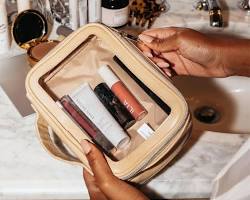Introduction
Fashion is more than just clothing; it’s a form of self-expression that allows us to communicate our identities, values, and aspirations to the world. Through our wardrobe choices, we can project our personalities, challenge societal norms, and embrace our individuality. In this comprehensive guide, we will explore the profound connection between fashion and personal identity, offering insights into how to use clothing as a tool for self-expression.
Fashion as a Form of Self-Expression
- Reflecting Personality: Our clothing choices can reflect our personality traits, interests, and values.
- Challenging Norms: Fashion can be used to challenge societal expectations and stereotypes.
- Empowerment and Confidence: Wearing clothes that make you feel confident and comfortable can boost your self-esteem.
- Creativity and Individuality: Fashion is a platform for creativity and self-expression, allowing you to showcase your unique style.
The Psychology of Fashion
- Nonverbal Communication: Our clothing choices can communicate messages about our social status, personality, and intentions.
- Identity Formation: Fashion plays a significant role in shaping our sense of self and identity.
- Emotional Expression: Clothing can be used to express our emotions and moods.
- Social Acceptance: Fashion can influence how we are perceived by others and our social acceptance.
Building a Personal Style
- Self-Reflection: Understand your personality, values, and lifestyle to inform your fashion choices.
- Experimentation: Try different styles and trends to discover what works best for you.
- Confidence and Comfort: Choose clothes that make you feel confident and comfortable.
- Personalization: Add your own unique touch to your outfits with accessories, customization, or styling techniques.
Fashion and Identity: Historical Perspectives
- Historical Fashion Trends: Explore how fashion has evolved throughout history and reflected societal changes.
- The Power of Clothing: Examine the role of clothing in shaping social hierarchies and identities in different cultures and time periods.
- Fashion as a Form of Protest: Discuss how fashion has been used as a tool for social and political activism.
Fashion and Gender Identity
- Challenging Gender Norms: Explore how fashion can be used to challenge traditional gender roles and stereotypes.
- Gender-Neutral Fashion: Discuss the rise of gender-neutral clothing and its impact on fashion.
- Body Positivity and Inclusivity: Advocate for body positivity and inclusivity in the fashion industry.
Sustainable Fashion and Ethical Choices
- Conscious Consumption: Choose sustainable and ethical fashion brands that prioritize environmental and social responsibility.
- Secondhand Shopping: Explore secondhand and vintage markets for unique and sustainable fashion options.
- Repair and Alterations: Extend the life of your clothes by repairing and altering them.
- Ethical Production: Support brands that prioritize fair labor practices and ethical sourcing.
Conclusion
Fashion is more than just clothing; it’s a powerful tool for self-expression and identity formation. By understanding the psychology of fashion and embracing your individuality, you can use your wardrobe to project your personality, challenge societal norms, and create a unique and authentic style. Remember, fashion is a journey, and there’s no right or wrong way to express yourself through your clothing choices.





